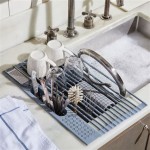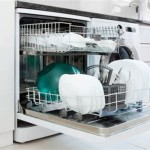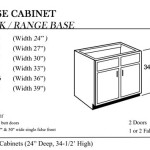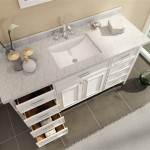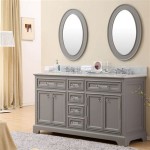How To Open a Sink Pipe: A Comprehensive Guide
A clogged sink pipe represents a common household plumbing issue. Addressing this problem often involves a systematic approach to identify the source of the blockage and apply appropriate remedies. Understanding the components of a standard sink drain assembly and the types of tools available will significantly aid in the process. This article provides a detailed guide on how to open a sink pipe and clear obstructions effectively.
Identifying the Source of the Clog
Before attempting to disassemble any portion of the sink drain, it is crucial to pinpoint the likely location of the clog. Common culprits include hair, soap scum, grease, food particles, and small objects accidentally dropped into the drain. Understanding where these materials tend to accumulate helps determine the most effective strategy for clearing the blockage.
Observe the drainage rate of the sink. If the water drains slowly but eventually empties, the clog is likely partial and located within the drainpipe itself, often in the P-trap. If the water does not drain at all, the blockage could be more severe or located further down the drain line, potentially requiring more extensive intervention.
Consider the recent history of the sink's usage. Did food waste recently go down the drain? Has there been an increase in hair accumulation due to shaving or grooming? Answering these questions provides valuable clues about the nature of the material causing the clog.
Smell can also be indicative. A foul odor emanating from the drain often suggests the presence of decomposing organic matter, such as food particles trapped within the drainpipe.
Tools and Materials Required
Successfully opening a sink pipe necessitates the use of appropriate tools and materials. Having these items readily available before starting the process streamlines the work and minimizes potential disruptions.
Plunger: A standard cup plunger or a flange plunger (designed for toilets but effective for sinks with overflows) is a basic tool for dislodging minor clogs. The plunger creates pressure to force the blockage either further down the drain or back up into the sink.
Basin Wrench: Also known as a sink wrench, this tool is designed to loosen and tighten nuts in hard-to-reach places, such as those connecting the faucet to the sink. While not always necessary for clearing clogs, it can be useful if disassembly of the drain assembly becomes required.
Channel-Lock Pliers: These adjustable pliers provide a secure grip on pipes and fittings, allowing for loosening and tightening connections. Ensure the jaws of the pliers are properly protected to avoid scratching or damaging the pipe surfaces.
Drain Snake (Plumbing Snake): A flexible metal cable with a corkscrew or auger tip designed to break up or retrieve clogs located deeper within the drainpipe. Available in various lengths, a plumber's snake is a valuable tool for persistent blockages.
Bucket: Place a bucket under the sink to catch any water or debris that may spill during disassembly. This helps prevent water damage and keeps the work area clean.
Gloves: Wearing rubber gloves protects hands from bacteria and grime present in the drainpipe.
Screwdriver (Phillips and Flathead): Used for removing screws that may secure components of the drain assembly, such as the pop-up stopper mechanism.
Old Towels or Rags: Use these to wipe up spills and protect surfaces from scratches.
Safety Glasses: Protect eyes from splashing water and debris.
Step-by-Step Guide to Opening a Sink Pipe
Once the source of the clog is estimated and the necessary tools are gathered, the process of opening the sink pipe can begin, taking the following steps:
Step 1: Plunging the Drain: Fill the sink with a few inches of water, enough to cover the cup of the plunger. Place the plunger firmly over the drain opening, ensuring a tight seal. If the sink has an overflow opening, cover it with a wet cloth or your hand to prevent air from escaping. Push and pull the plunger up and down vigorously for several minutes. Remove the plunger and check if the water drains freely. Repeat the process if necessary.
Step 2: Removing and Cleaning the P-Trap: The P-trap is the curved pipe located under the sink. It's designed to trap debris and prevent sewer gases from entering the house. It is a common location for clogs to accumulate. Place a bucket under the P-trap to catch any water. Loosen the slip nuts connecting the P-trap to the drainpipe and the tailpiece (the pipe extending from the sink drain). Carefully remove the P-trap and empty its contents into the bucket. Inspect the trap for any visible clogs and remove them by hand or with a tool. Rinse the P-trap thoroughly with water to remove any remaining debris. Reassemble the P-trap, ensuring the slip nuts are tightened securely but not overtightened, as this can damage the plastic fittings. Run water into the sink to check for leaks.
Step 3: Using a Drain Snake: If plunging and cleaning the P-trap do not resolve the clog, a drain snake may be necessary. Insert the end of the drain snake into the drain opening and carefully feed it down the drainpipe. Rotate the handle of the snake to help it navigate through the pipe and break up or retrieve the clog. If resistance is encountered, continue rotating the snake to work through the blockage. Once the snake has reached a significant distance or the blockage is cleared, slowly retract it, pulling out any debris. Rinse the snake thoroughly with water and dispose of the debris properly. Run water into the sink to check for proper drainage. Repeat the process if necessary.
Step 4: Cleaning the Pop-Up Stopper: The pop-up stopper is the mechanism that allows you to close and open the sink drain. Hair and debris frequently accumulate around the stopper, contributing to clogs. Disconnect the linkage that connects the pop-up stopper to the lever behind the faucet. Lift the stopper out of the drain opening. Clean the stopper thoroughly, removing any hair or debris. Use a small brush or cleaning tool to clean the drain opening where the stopper sits. Reinstall the stopper and reconnect the linkage. Test the pop-up mechanism to ensure it is functioning properly.
Step 5: Chemical Drain Cleaners: While frequently advertised, chemical drain cleaners should be used with extreme caution and only as a last resort. These products contain harsh chemicals that can damage pipes, especially older or plastic pipes. Always follow the manufacturer's instructions carefully, wearing appropriate safety gear (gloves and eye protection). Avoid mixing different chemical drain cleaners, as this can create dangerous fumes. If chemical drain cleaners do not resolve the clog, consider seeking professional assistance, as attempting to snake the drain after using chemicals can be hazardous.
Step 6: Checking the Vent Stack: In some cases, a clog in the drainpipe may be caused by a blockage in the vent stack. The vent stack is a pipe that extends from the drain system to the roof, allowing air to enter the drainpipes and prevent vacuums from forming, which can impede drainage. Leaves, debris, or even small animals can sometimes block the vent stack. This usually requires access to the roof and specialized tools to clear the obstruction. Due to the potential safety hazards involved, this step is best left to a professional plumber.
Step 7: Professional Assistance: If none of the above methods successfully clears the clog, it might indicate a more serious plumbing issue requiring professional attention. A licensed plumber has the expertise, tools, and experience to diagnose and resolve complex drain problems, ensuring the issue is addressed safely and effectively. They can also identify underlying issues that may be contributing to recurring clogs.
Preventative measures can mitigate the frequency of sink drain clogs. Consider using a drain strainer to catch hair and food particles. Avoid pouring grease down the drain, as it solidifies and contributes to blockages. Regularly flush the drain with hot water to help dissolve grease and soap scum.

How To Unclog A Sink The Right Way

How To Remove A Kitchen Sink Drain 13 Steps With Pictures

How To Open Up A Slow Sink Drain Clog Remove P Trap And Stopper

How To Clean A P Trap Or U Bend 10 Steps With Pictures

5 Natural Ways To Unclog A Bathroom Sink Hiller How

Getting A Watertight Seal On The Sink Drain Assembly

4 Simple Ways To Fix A Leaky Sink Drain Pipe Wikihow

Solved How To Cap Unused Open Sink Pipes And Wa Bunnings Work Community

How To Install A Pop Up Drain The Home

P Trap Installation Drain Doesn T Line Up Bathroom Sink Pipe
